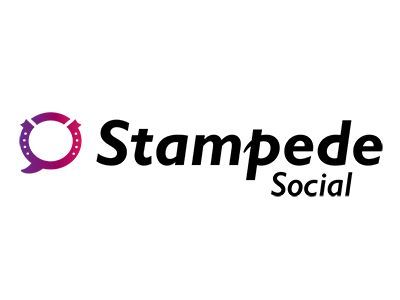How to Analyze Instagram Competitors and Grow Your Audience
June 11, 2024
Checking out what your competitors are doing on Instagram gives you a sneak peek into their strategies, how their content is performing, and how their audience is engaging.

Success on Instagram isn’t just about posting your content. It's also about understanding what works and why it works!
While tracking your own analytics is important, studying your competitors can also help with valuable insights to improve your strategy and reach a larger audience.
By analyzing your competitors’ Instagram performance, you get a data-backed blueprint for success.
Instead of guessing what might work, you can learn from their wins (and mistakes) to refine your content, improve engagement, and grow your audience faster.
In this guide, we’ll break down how to track your competitors, what key metrics to focus on, and how to turn those insights into real Instagram growth.
Let’s dive in!
What is Instagram Competitor Analysis?
Checking out what your competitors are doing on Instagram is all about figuring out what kind of content they're posting, how much engagement they're getting, and how they're growing their accounts.
For example, if a competitor in your niche gets 2,000 views on a reel, you can look at the caption or hashtags they used and test something similar for your followers. This approach gives you a clear path to better results, based on what’s already succeeding.
Basically, you're gathering info to see what's working for them and how you can use those ideas to improve your own Instagram game.
Why Competitor Analysis Matters For Instagram
Analyzing your Instagram competitors helps you understand what connects with you and your audience. It also allows you to identify content trends, posting patterns, and engagement strategies that can inform your approach.
Competitor analysis also helps you:
- Find content ideas that drive engagement
- Discover effective captions, hashtags, and calls to action
- Identify potential brand partnerships and influencer collaborations
- Stay ahead of industry trends and shifts in audience preferences
- Optimize your content for increased visibility and reach
- Improve engagement rates by identifying what works best in your niche
Key Metrics For Tracking Instagram Competition
When analyzing your Instagram competitors, focus on these important points:
#1 Top-Performing Posts: Identify which content types (reels, carousels, static posts, etc) generate the most engagement and views. Look at captions, hashtags, and visual elements that contribute to success.
#2 Posting Frequency and Timing: Track how often and when the competitors post to determine best possible posting times for your audience.
#3 Branded Content and Partnerships: See how competitors integrate sponsored content and product promotions to engage with their audience.
#4 Visual Branding: Study competitors' color schemes, filters, and layout styles to refine your own branding while standing out.
#5 Engagement Rates: Analyze how audiences interact with competitors’ content. Look at the number of likes, comments, shares, and overall interaction per post.
#6 Audience Demographics: Identify the target audience of your competitors, including age, location, interests, and behaviors, to tailor your content accordingly.
How Competitor Analysis Can Increase Revenue
Understanding what works for others can translate into higher engagement, more followers, and better monetization opportunities. Research from House of Marketers shows that brands using effective influencer collaborations earn an estimated $4.12 in earned media value for every $1 spent.
Additionally, influencers who track competitor data often optimize their strategies, leading to stronger audience engagement and higher revenue.
Competitor insights can also help you adjust your pricing strategies, refine promotional offers, and create content that appeals directly to potential buyers. If a competitor consistently drives high engagement with specific promotions, you can adapt similar approaches while adding your unique value.
Steps to Get Started On Instagram Competitor Analysis
Step 1: Identify Competitors
Make a list of 5-10 competitors in your niche and follow their accounts. Choose both direct competitors and aspirational accounts to track.
Step 2: Analyze Content
Look for common themes in their top posts, including post formats, captions, and engagement tactics. Compare high-performing content and underperforming posts to identify patterns.
Step 3: Track Posting Schedules
Observe how often they post and which times generate the most interactions. Use this data to adjust your posting strategy for maximum engagement.
Step 4: Evaluate Branding
Note their design choices and assess how you can differentiate your content. A unique aesthetic can help your profile stand out while remaining competitive.
Step 5: Monitor Hashtag Usage
Identify high-performing hashtags that competitors use to reach their audience. Experiment with similar hashtags in your posts to increase visibility.
Step 6: Engage with Their Audience
Participate in discussions in the comment sections of competitors’ posts. Engaging with an already interested audience can increase your visibility.
Step 7: Refine Your Strategy
Apply insights from competitor analysis to enhance your content and engagement. Track your own performance and adjust your approach based on results.
Tools for Competitor Analysis
To streamline your research, consider using tools such as:
- Stampede Social: Provides AI Instagram competitor tracking features, including target audience, hashtag analysis, and content theme, etc
- Instagram Insights (for personal performance tracking)
- Hootsuite or Metricool (for competitor engagement tracking)
- Social Blade (for follower growth insights)
- Hashtagify (for hashtag trend analysis)
- SEMrush or SimilarWeb (for website traffic comparisons and digital presence analysis)
Ongoing Competitor Analysis for Long-Term Growth
Competitor analysis is not a one-time task. Trends shift, algorithms change, and audience preferences keep on changing.
Regularly monitoring industry leaders and competitors can help you adapt to changes, improve your content strategy, and grow your Instagram presence more effectively.
Dedicate some time each month to reviewing competitor content, updating your strategy, and testing new engagement tactics. By consistently refining your approach, you can stay ahead in your niche and continuously improve your Instagram growth and revenue potential.
So what are you waiting for? Start analyzing your competitors and crush your Instagram game!
FAQ
1. How do I find my Instagram competitors?
Start by identifying accounts that share a similar target audience, content style, or product offerings. Use Instagram search, hashtags, and industry-related accounts to find competitors. Tools like Stampede Social can also help track competitor performance.
2. Why is competitor analysis important for Instagram growth?
Competitor analysis helps you identify successful content strategies, engagement tactics, and audience preferences.
3. Should I copy my competitors' Instagram strategy
No, instead of copying, use competitor analysis to create your own unique content strategy.
4. Does Instagram competitor analysis help with brand collaborations?
Yes. By analyzing competitors' brand partnerships, you can identify companies that work with influencers in your niche. This can help you pitch brands for collaborations and sponsorship opportunities.
5. Can I analyze competitors if I have a small Instagram account?
Absolutely. Even with a small following, competitor analysis helps you understand industry trends, content strategies, and audience behaviors, which can accelerate your Instagram growth.?


